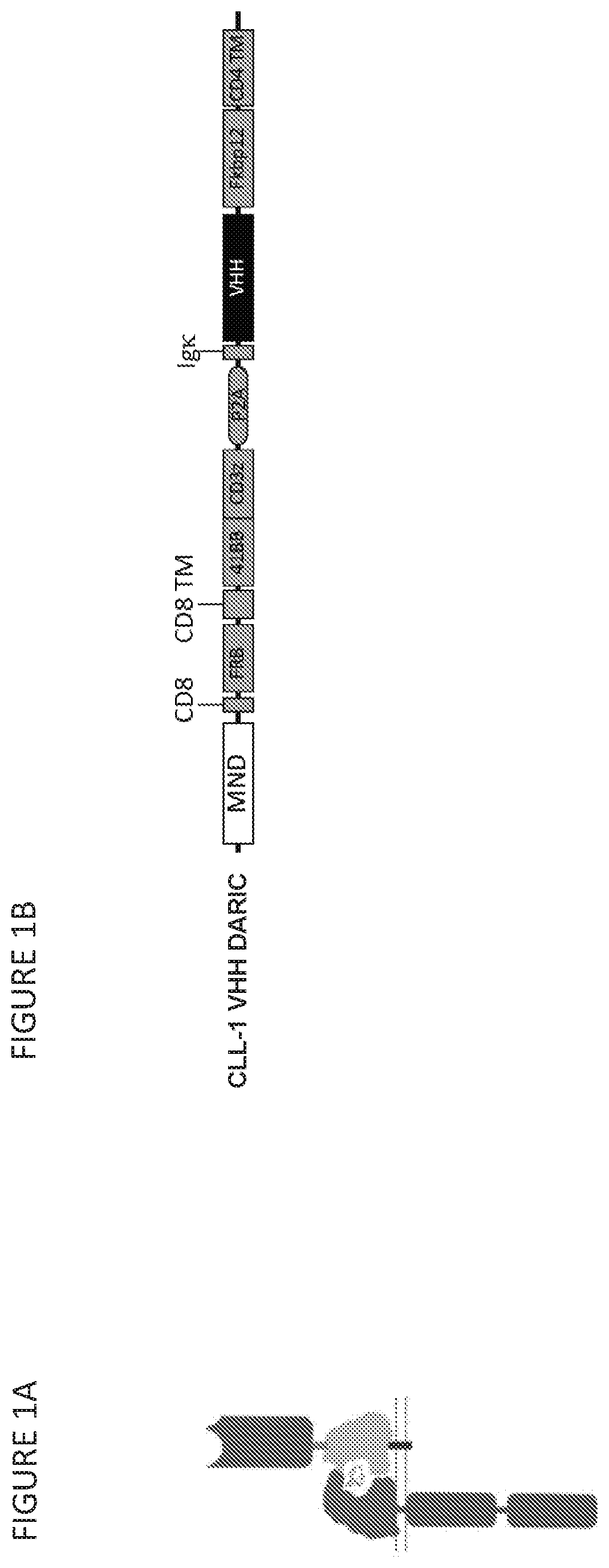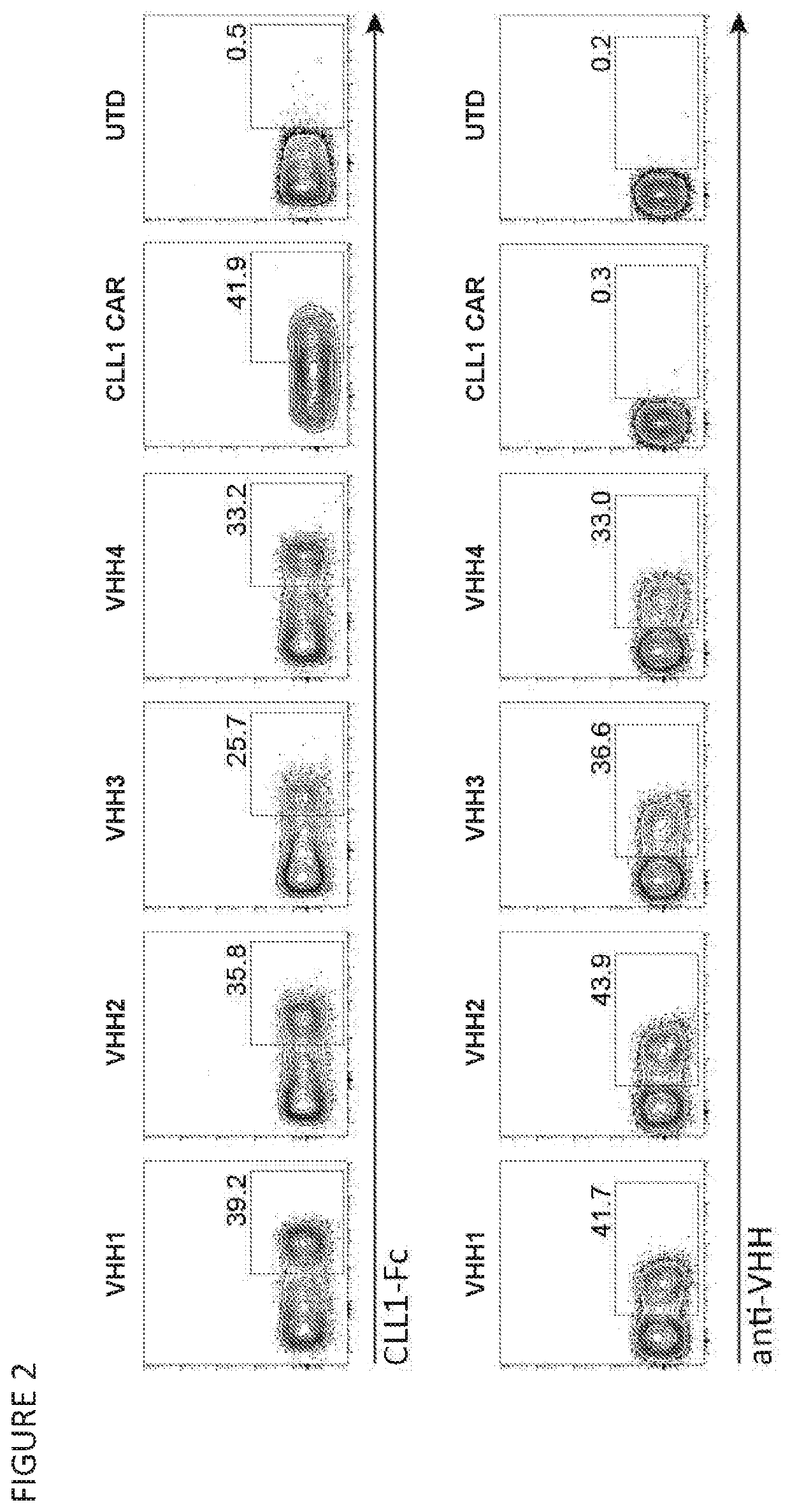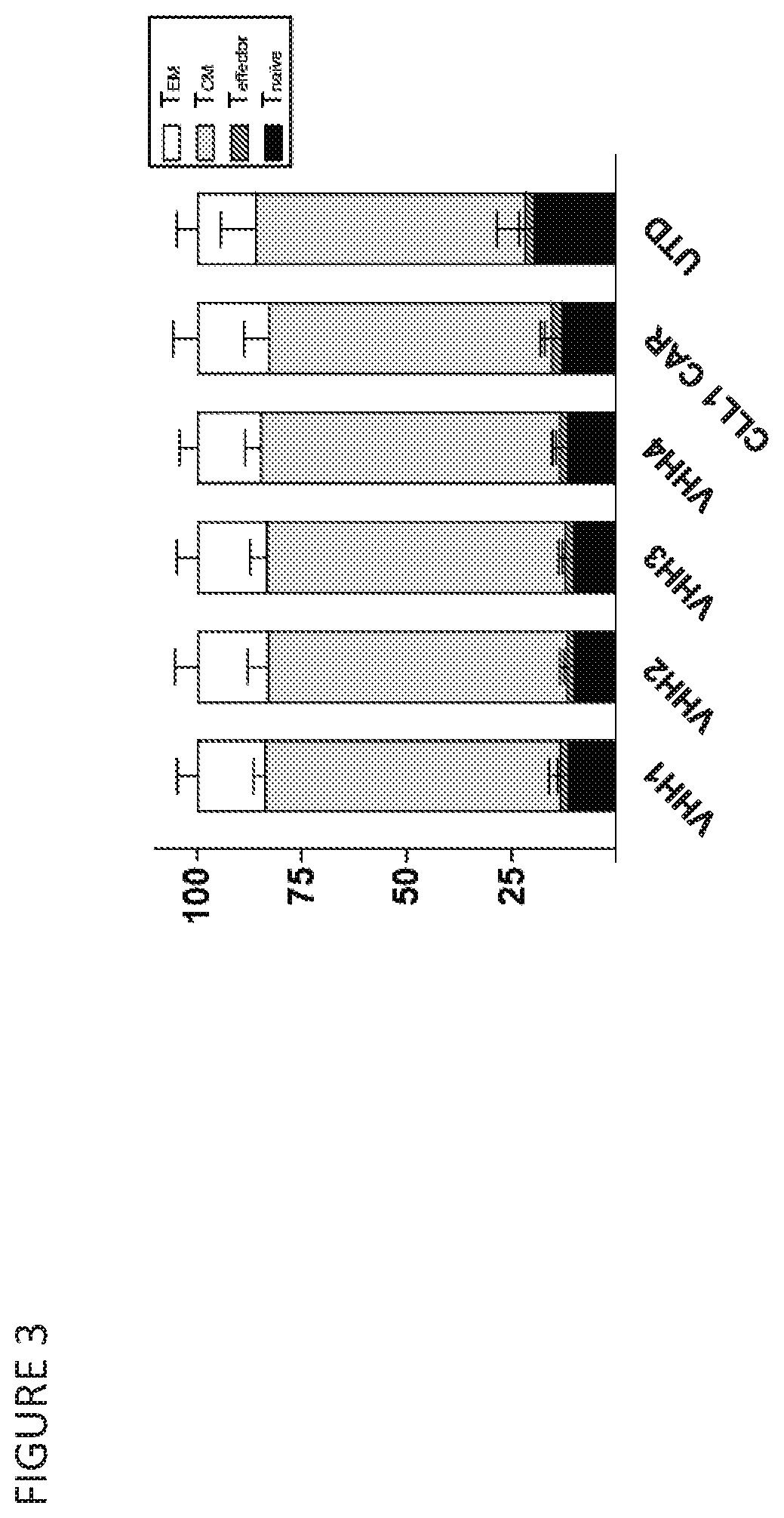Cll-1 targeted immunotherapies
a targeted immunotherapy and target cell technology, applied in the field of adoptive cell therapy improvement, can solve the problems of limited success of car t cell therapy and disappointing clinical activity
- Summary
- Abstract
- Description
- Claims
- Application Information
AI Technical Summary
Benefits of technology
Problems solved by technology
Method used
Image
Examples
example 1
CLL-1 VHH DARIC T Cells Exhibit Anti-Tumor Responses
[0430]Anti-CLL-1 VHH DARIC binding and signaling components were designed, constructed, and verified. CLL-1 specific VHH DARIC lentiviral vectors were constructed comprising an MNDU3 promoter operably linked to a polynucleotide encoding: a DARIC signaling component (CD8α-signal peptide, an FRB variant (T82L), a CD8α transmembrane domain, an intracellular 4-1BB costimulatory domain, and a CD3 zeta signaling domain); a P2A sequence; and a DARIC binding component (an Igκ-signal peptide, a CLL-1 specific VHH binding domain, a G45 linker, an FKBP12 domain, and a CD4 derived transmembrane domain with a truncated intracellular domain (FIG. 1B). See, e.g., SEQ ID NOs: 20-25. T cells transduced with anti-CLL-1 DARIC lentiviral vectors express the membrane bound polypeptides shown in FIG. 1A. An anti-CLL-1 scFv CAR was used as a control.
[0431]T cells from three donors were each transduced with one of four LVVs encoding different CLL-1 specif...
example 2
CLL-1 VHH DARIC T Cells Specifically Respond to AML Cell Lines
[0433]Anti-CLL-1 VHH DARIC T cells were generated as described in Example 1. T cells from three donors were transduced with LVVs encoding different anti-CLL-1 VHH DARICs and expanded for 10 days. Controls included untransduced (UTD) T cells. Anti-CLL-1 VHH DARIC T cells were co-cultured with CLL-1 expressing MV4-11 or HL60 ANIL cell lines at an E:T ratio of 1:1 in the presence or absence of AP21967 for 24 hours. in response to MV4-11 or HL60 target cells in the presence of AP21967. FIG. 5.
example 3
CLL-1 VHH DARIC T Cells Specifically Recognize CLL-1 Antigen
[0434]Anti-CLL-1 VHH DARIC T cells were generated as described in Example 1. T cells from three donors were transduced with LVVs encoding different anti-CLL-1 VHH DARICs and expanded for 10 days. Controls included UTD T cells. The AML cell line THP-1 was modified to knock-out CLL-1 expression (CLL-1-KO cells). FIG. 6A. Anti-CLL-1 VHH DARIC T cells were co-cultured with THP-1 cells or CLL-1-KO cells at an E:T ratio of 1:1 in the presence or absence of AP21967 for 24 hours. Anti-CLL-1 VHH DARIC T cells produced cytokine when co-cultured with THP-1 cells in the presence of AP21967 (FIG. 6B-C).
[0435]In general, in the following claims, the terms used should not be construed to limit the claims to the specific embodiments disclosed in the specification and the claims, but should be construed to include all possible embodiments along with the full scope of equivalents to which such claims are entitled. Accordingly, the claims are...
PUM
| Property | Measurement | Unit |
|---|---|---|
| weight | aaaaa | aaaaa |
| composition | aaaaa | aaaaa |
| chemical | aaaaa | aaaaa |
Abstract
Description
Claims
Application Information
 Login to View More
Login to View More - R&D Engineer
- R&D Manager
- IP Professional
- Industry Leading Data Capabilities
- Powerful AI technology
- Patent DNA Extraction
Browse by: Latest US Patents, China's latest patents, Technical Efficacy Thesaurus, Application Domain, Technology Topic, Popular Technical Reports.
© 2024 PatSnap. All rights reserved.Legal|Privacy policy|Modern Slavery Act Transparency Statement|Sitemap|About US| Contact US: help@patsnap.com










